The Greater Caucasus Mountains
The Greater Caucasus Mountains form a natural border between big brother Russia and former satellite republic Georgia. These two countries have had a love-hate relationship for the last couple hundred years, and currently they have some serious differences, so perhaps it’s good they have such a formidable barrier to separate them. As we further explore Georgia we couldn’t pass up a chance to climb into these high and mighty mountains and see them first hand.
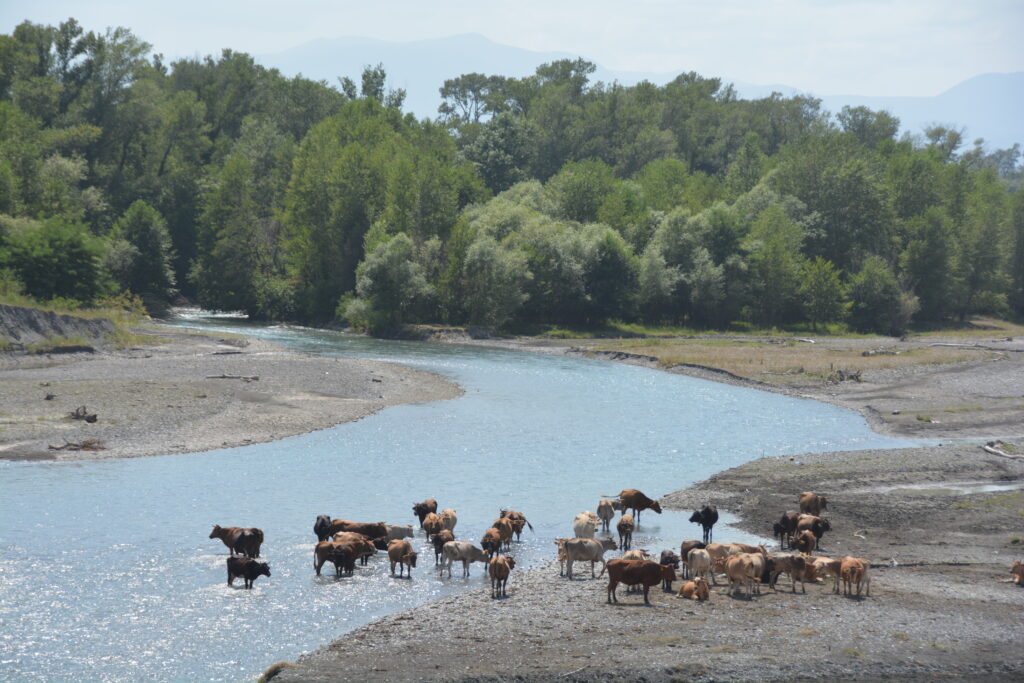
Our research showed there were a number of ways to explore the mountains and since we were at the eastern end of them we decided to head up to the remote Tusheti region where there is only one seasonal road in and out of this corner of the country and it passes over the very impressive Abano Pass at 2,800 metres (9200 feet) before finishing near the mountain village of Omalo. The trick is, however, that it is a very rough four-wheel drive track with dozens of super-tight and steep switchbacks amongst numerous hazards. With overnight rain it wasn’t looking good but we were keen to try it.
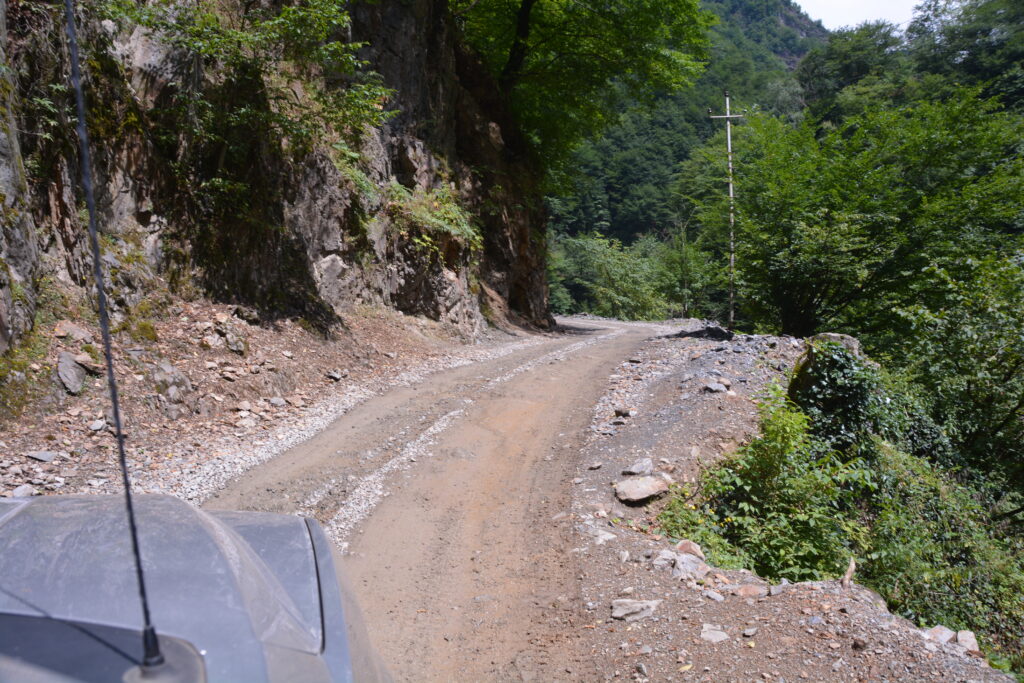
The track started off gently enough but soon hit very rough and steep sections, overnight rain running down the road, mostly only one vehicle wide and absolutely no guard rails. Tramp has an enormous engine and aggressive mud-terrain tyres so it was fit for the fight but it is also seven metres (23 feet) long and posed a real problem to these tight and steep switchbacks, sometimes having to do very dodgy three-point turns. And that’s not to mention the problem when meeting vehicles coming the other way. Other vehicles on the track were shorter and smaller, much better suited for this rough-as-guts tight track.
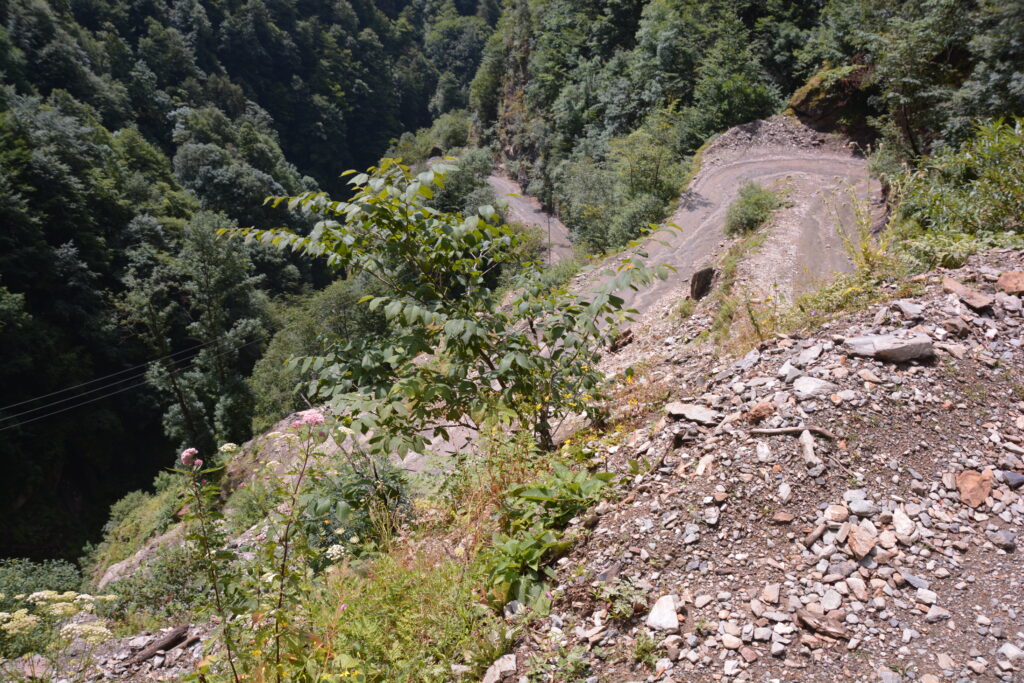
It eventually became clear that this was going to be more labour than love for Tramp, the safe space available for him to maneuver too tight and scary and after a little while Julie called a halt to the project. Like knowing when to turn back when climbing Everest, our Everest was too far away and after a very precarious pirouette on a steep and slippery switchback we headed back for flatter ground. We still had big plans for the mountains but not the Tusheti region.
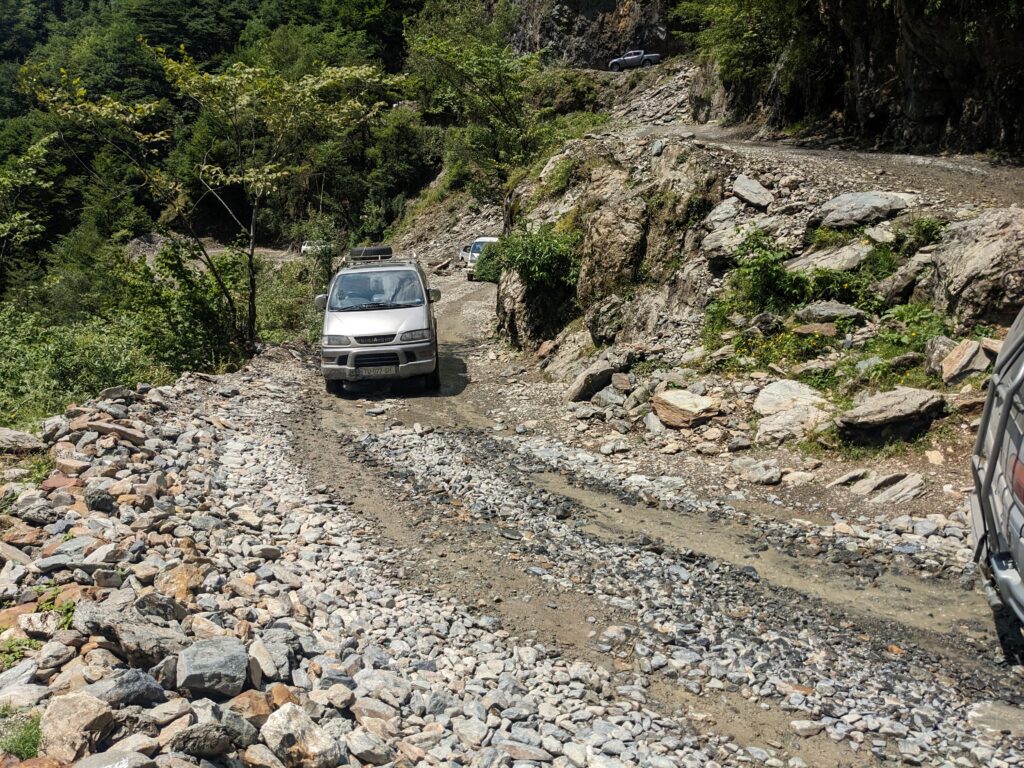
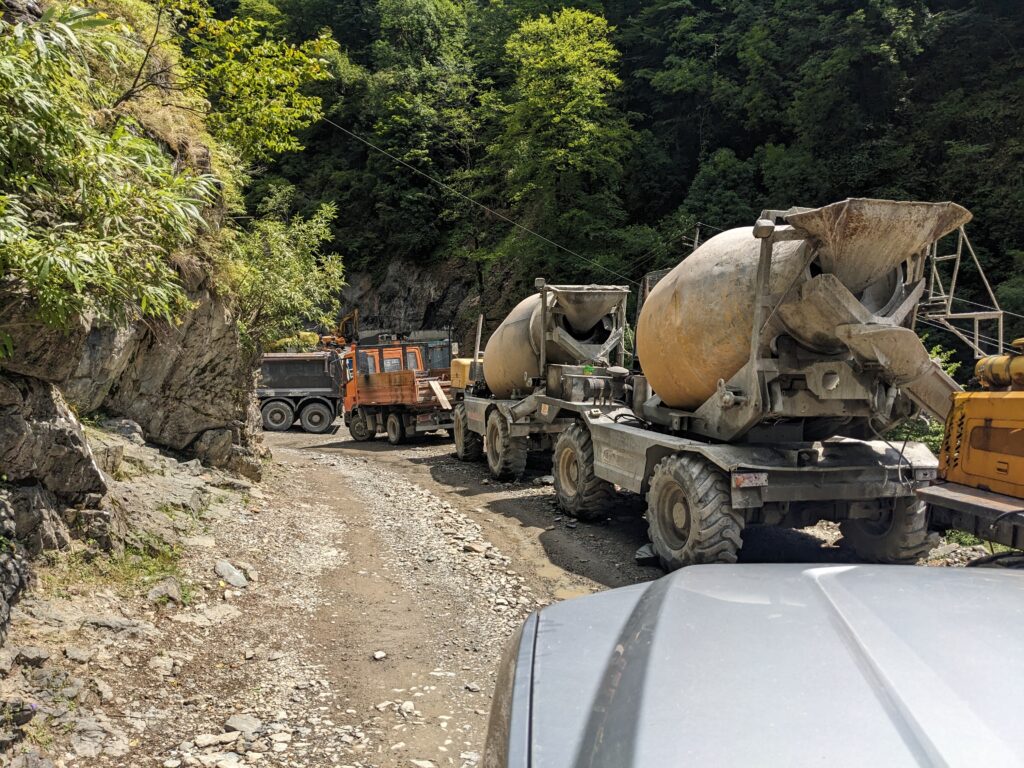
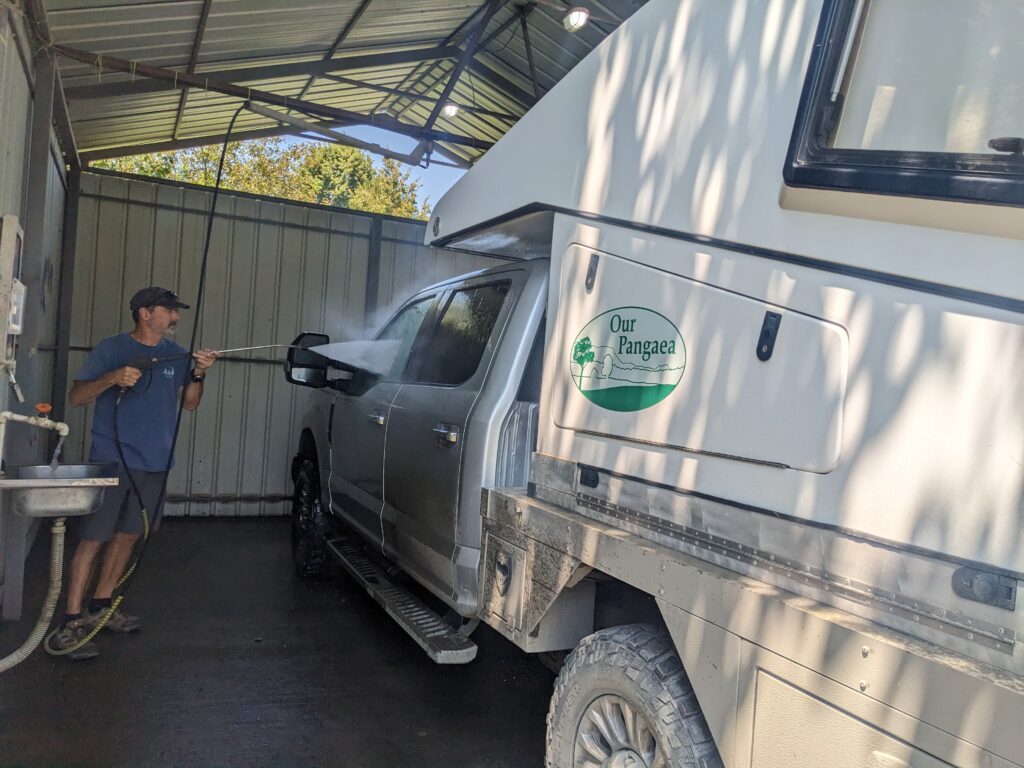
After catching another 16th century monastery and church along the way, because you can never have too many of them, we camped for the night behind a new set of holiday cabins with a slick pool and an ample grassy field at our disposal. We deserved it – the day had been more than enough.
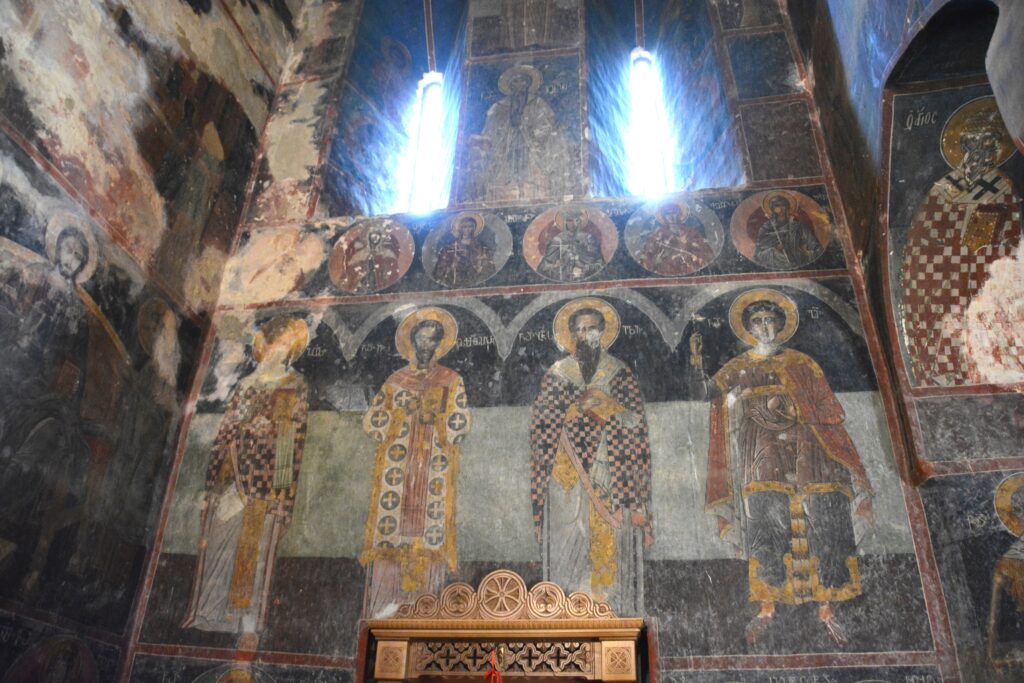
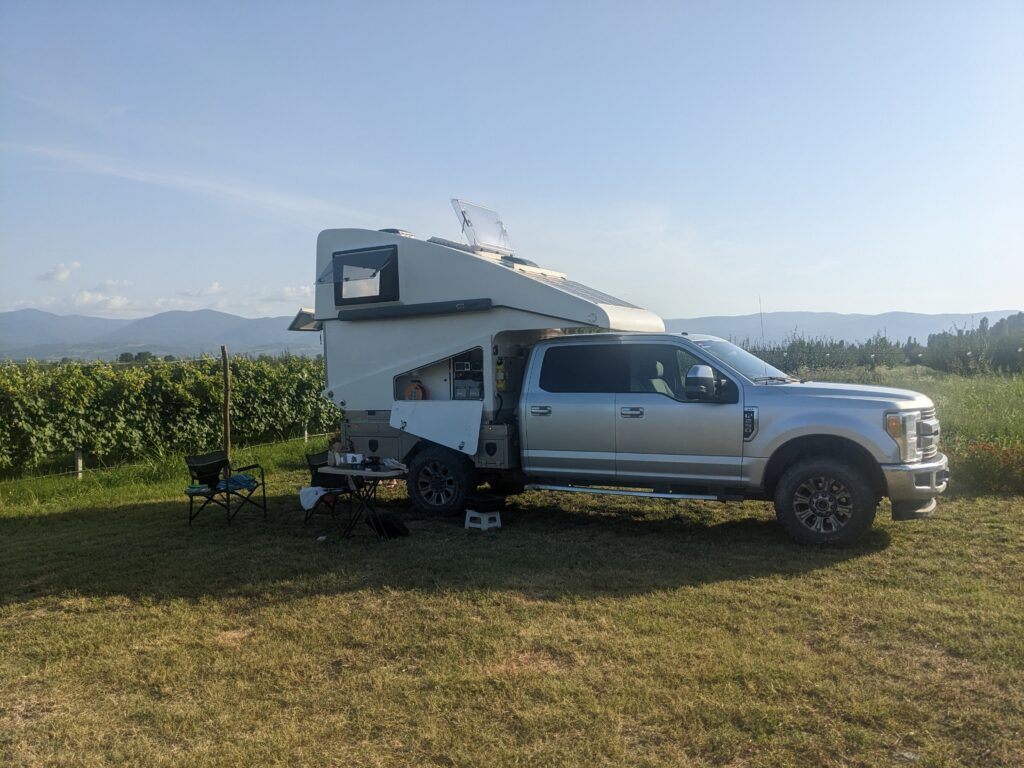
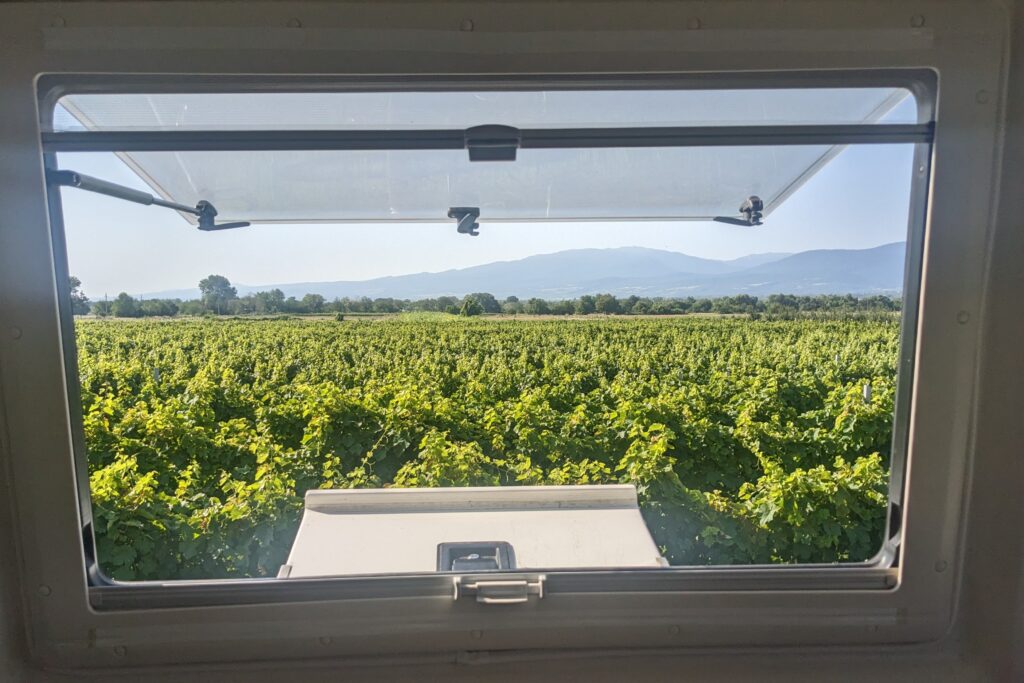
Not deterred, and slightly curious for the day ahead, we drove through the foothills of the mountains to what is called the Georgia Military Highway. First built in the 19th century to link Georgia and Russia through these high mountains, the road has become an essential economic link for trading between Mother Russia and nearby countries, especially Armenia.
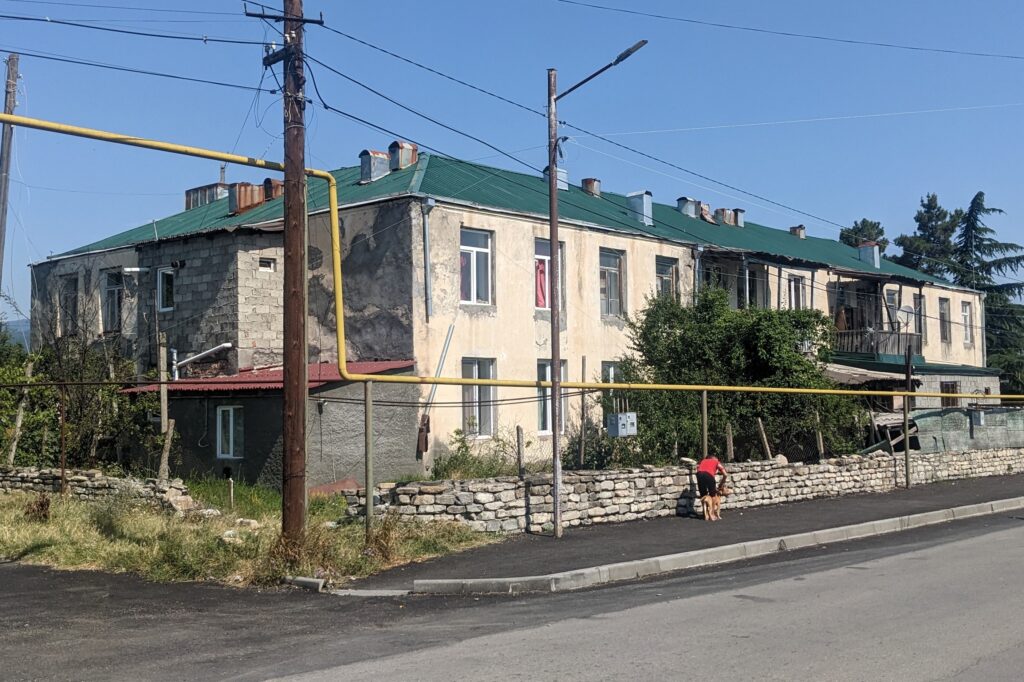
We turned north on the highway, passing the handsome Zhinvali Reservoir, and followed the road as it led us up into the heart of the mountains, past stunning views of these towering giants, the road’s quality deteriorating as we climbed, many tight switchbacks, past ski resorts, ever upward. We topped out at 2,395 metres (7,900 feet) as we crossed the Jvari Pass, patches of snow above and below us.
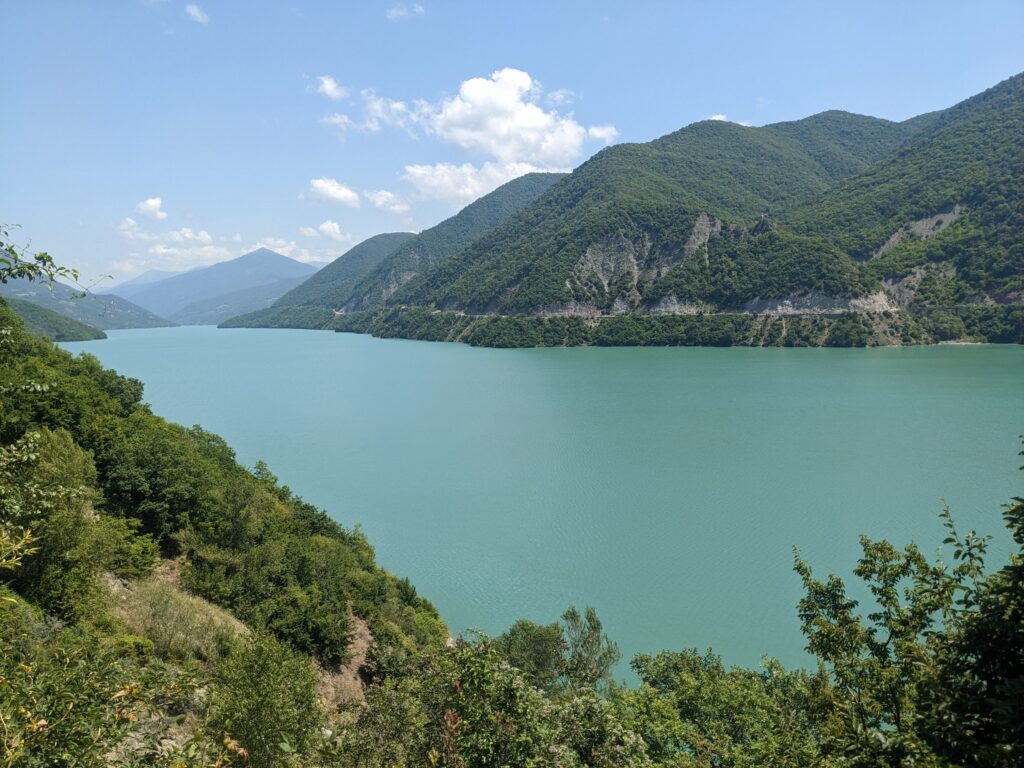
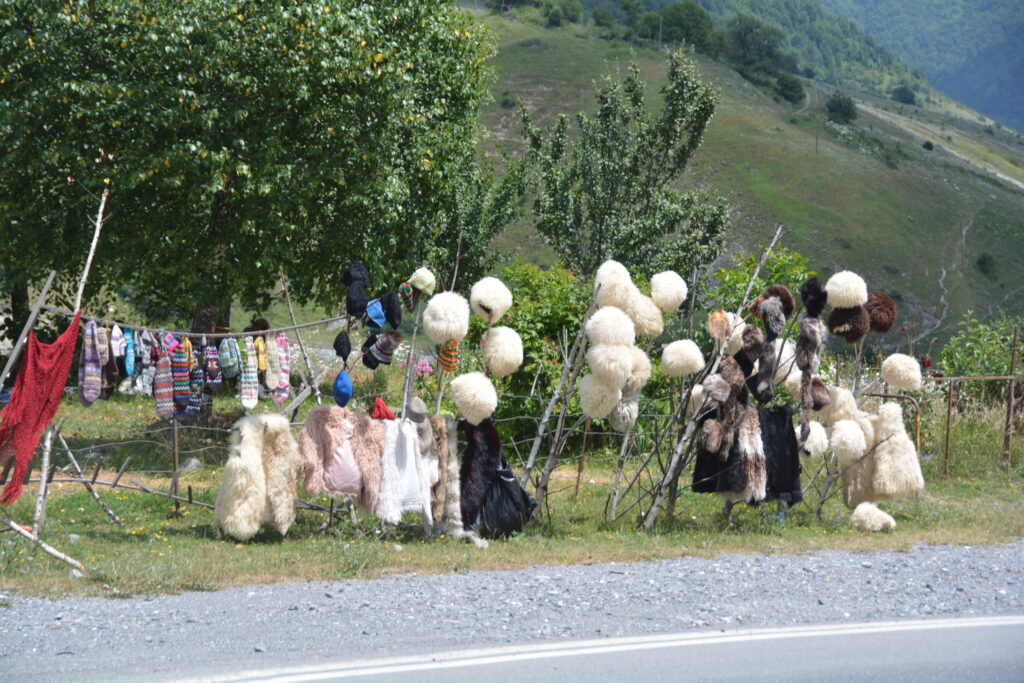
What was really interesting was the traffic. About half the vehicles were Georgian but the other half were Russian which is not surprising since this is the only open road connecting the countries. But more so, coming down the hill from the Russian border was a long continuous conga line of huge Russian trucks, all carrying goods being sold or traded to other countries. There may be international boycotts on Russian goods but there’s a roaring trade on the Georgia Military Highway.
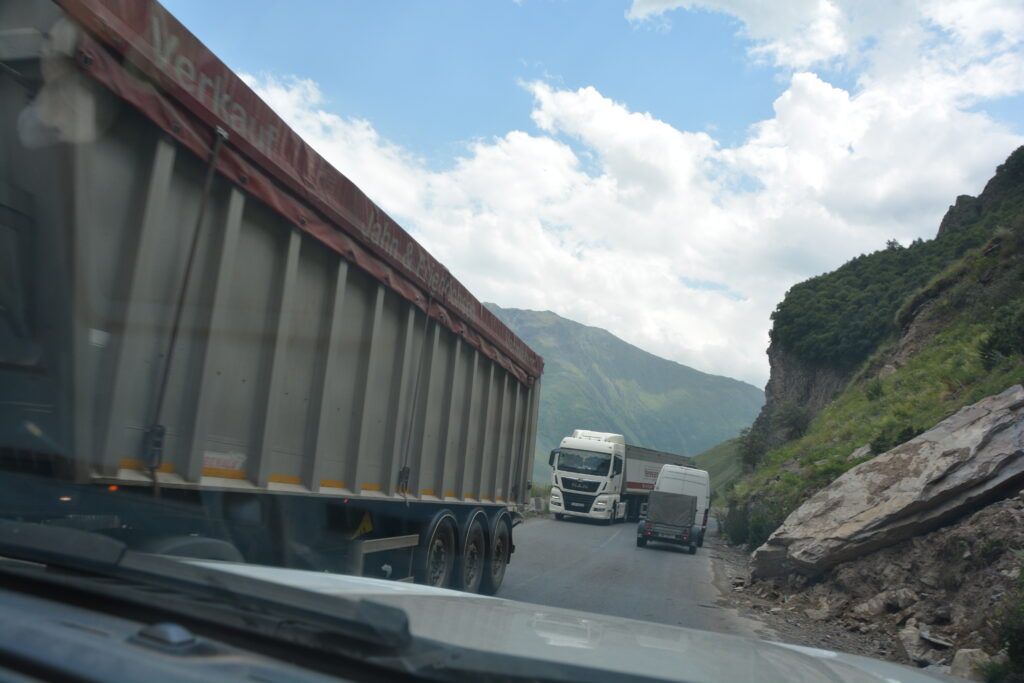
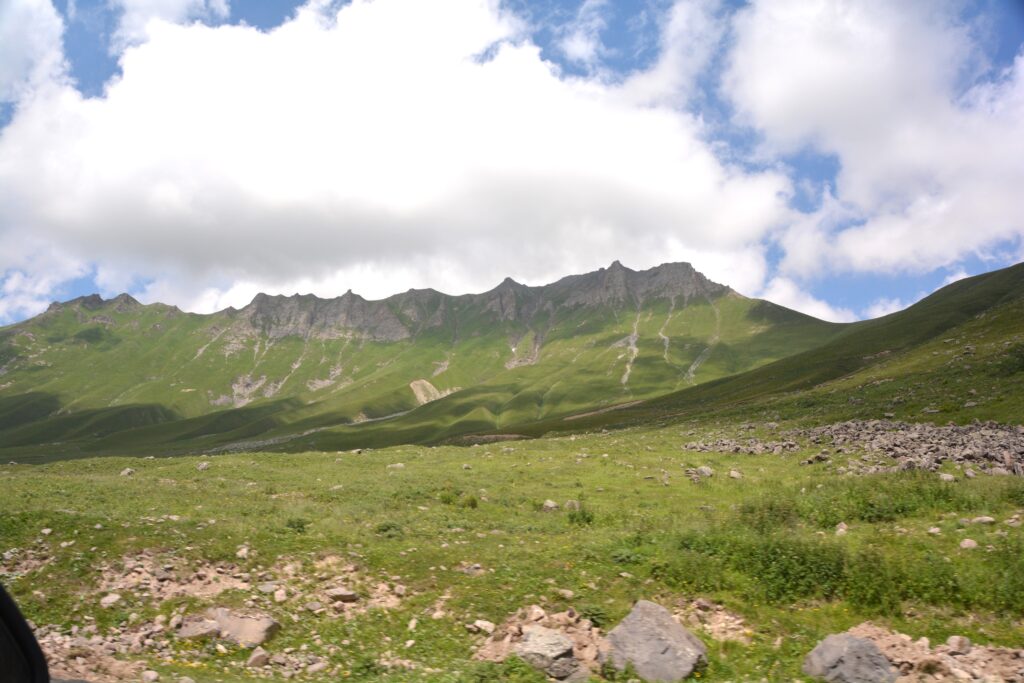
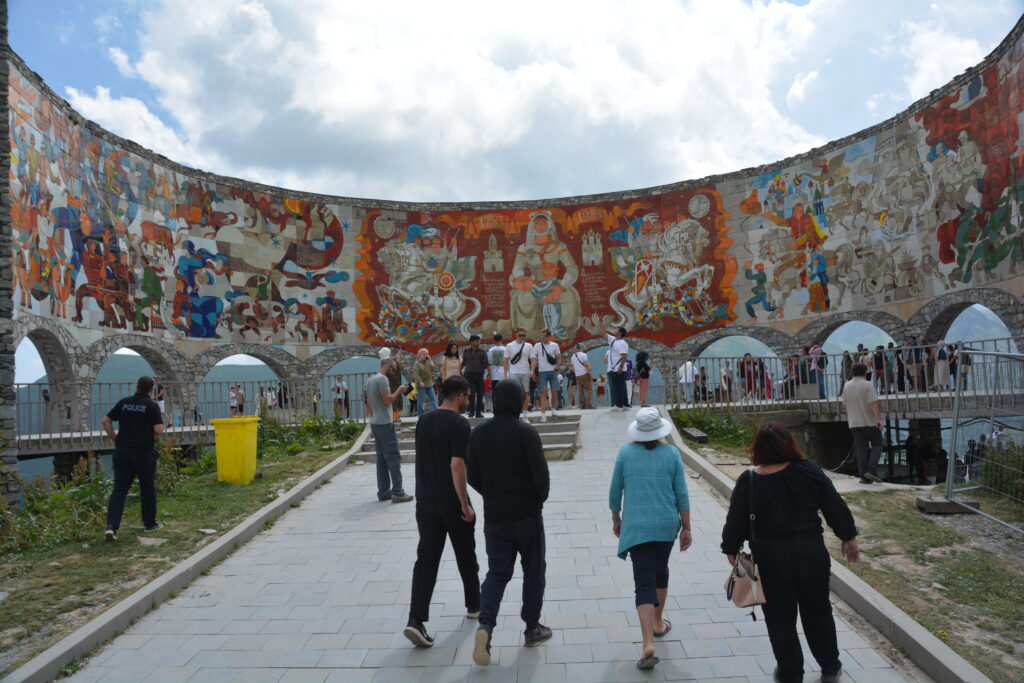
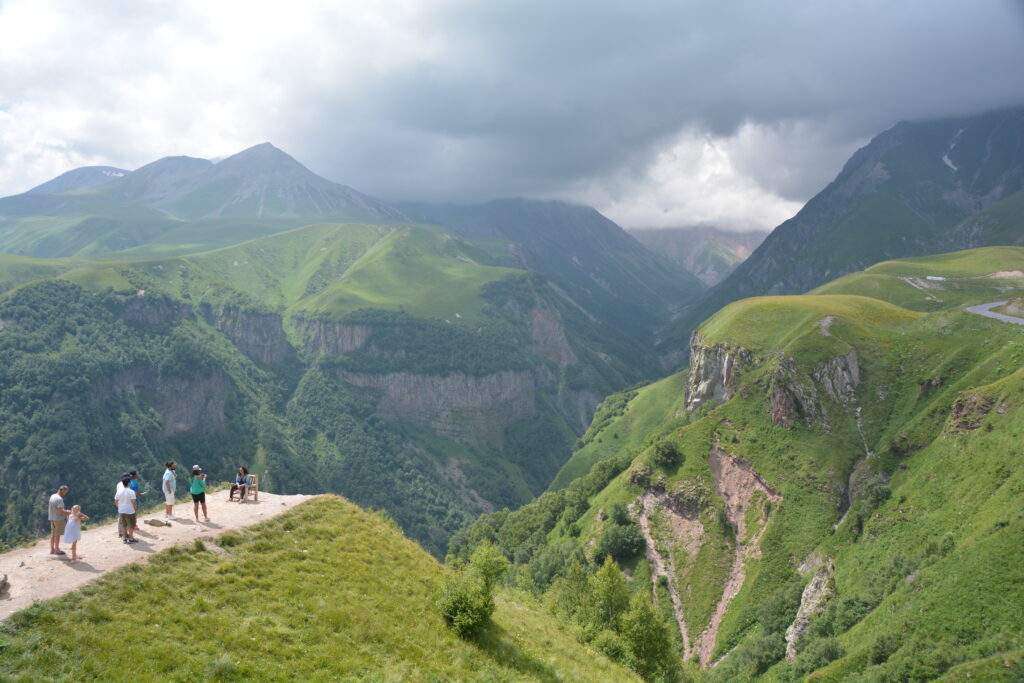
We finally made our target, the main mountain town of Stepantsminda (formerly known as Kazbegi), which is nestled amongst these dramatic mountains with Mt. Kazbegi, at 5,054 metres (16,600 feet) standing tall over all else. The town had sort of a mountain tourism frontier feel to it with an unpaved main street, clogged traffic and a nice buzz about the people on the street. Just like us, they were here to enjoy the mountains.
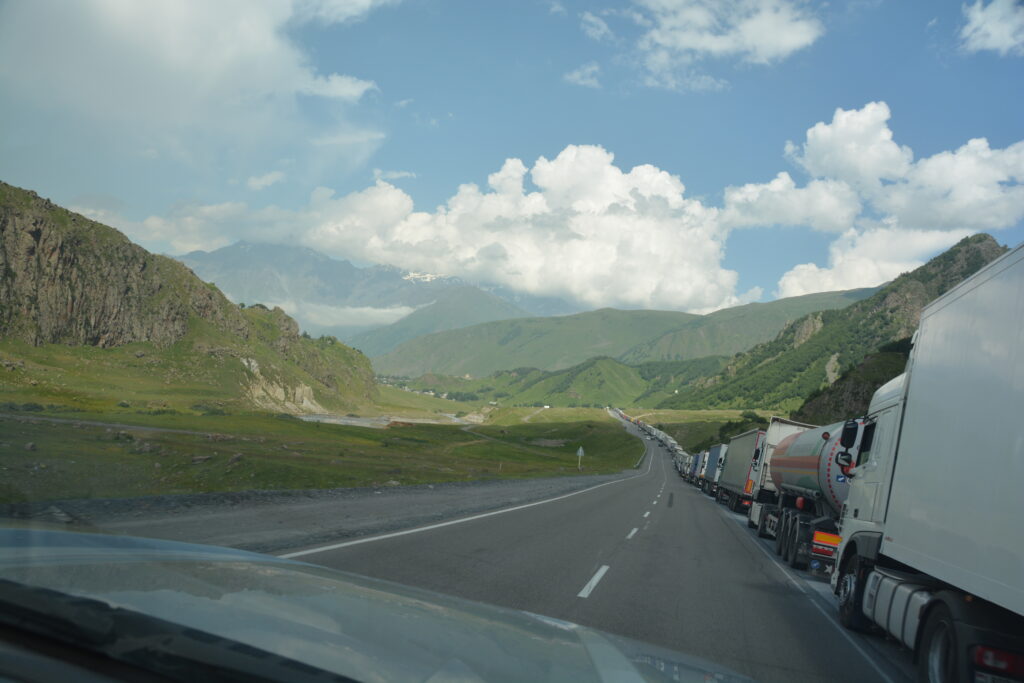
It was Saturday night and we heard of a local food festival behind the town so we made our way up there to mix it with the natives and try some of the local grub. It was all great fun, the music, the families, the party atmosphere but we remarked that the organisation of the event, especially when it came to the food, was kind of like how the Georgians drive – total chaos.
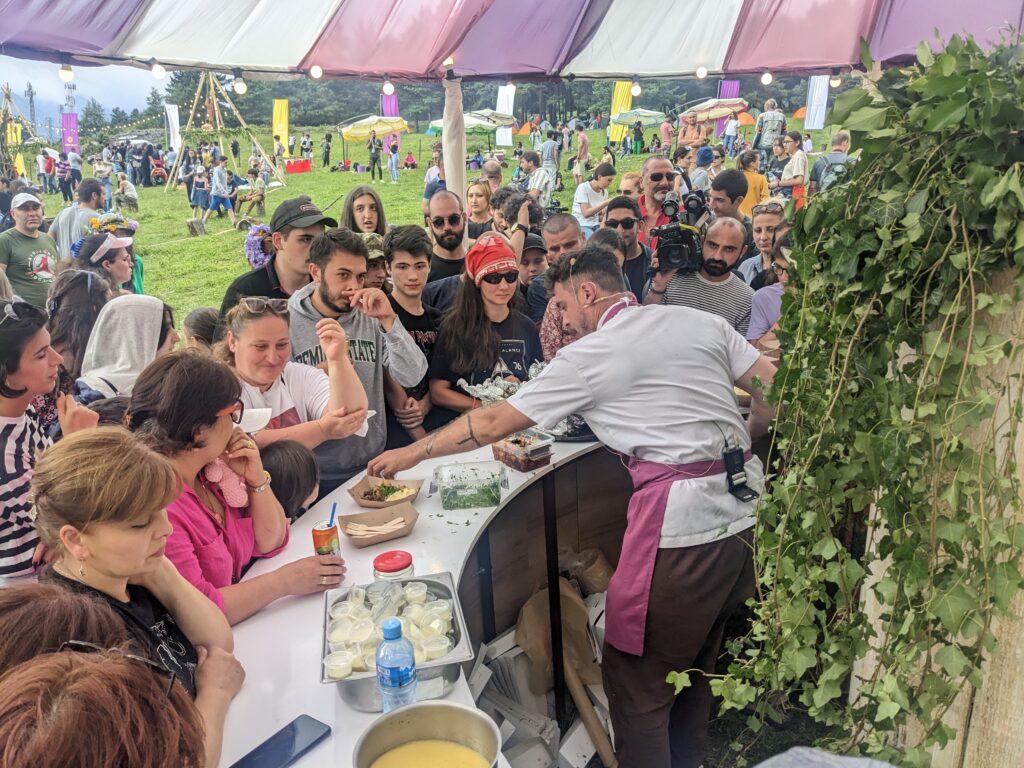
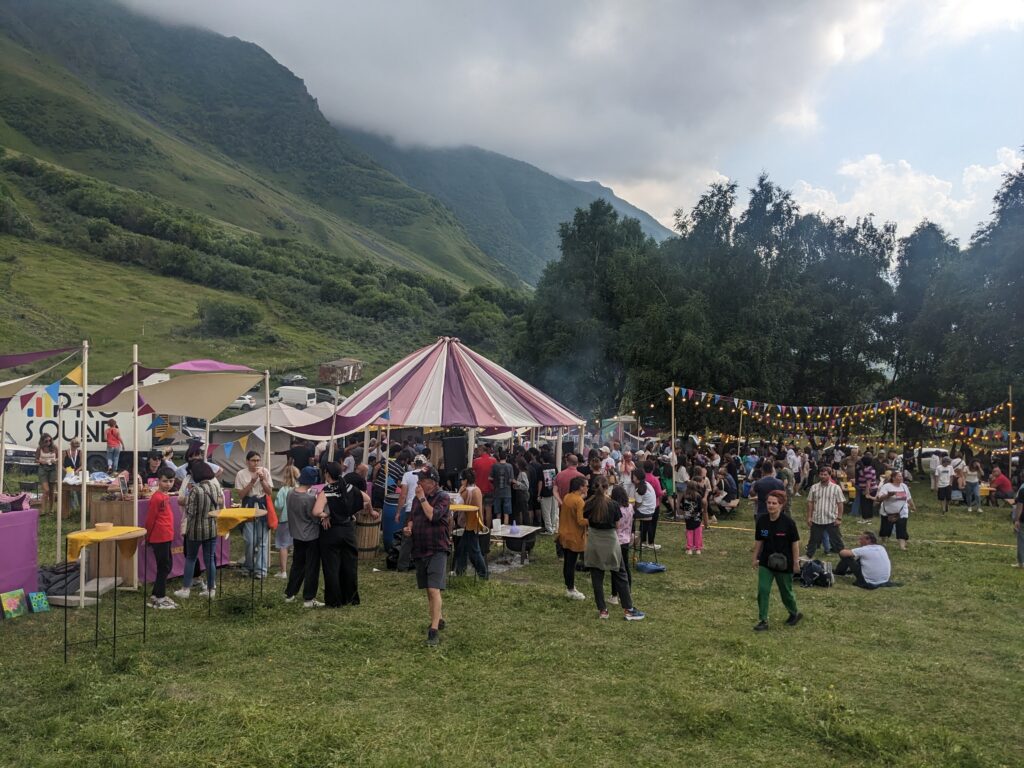
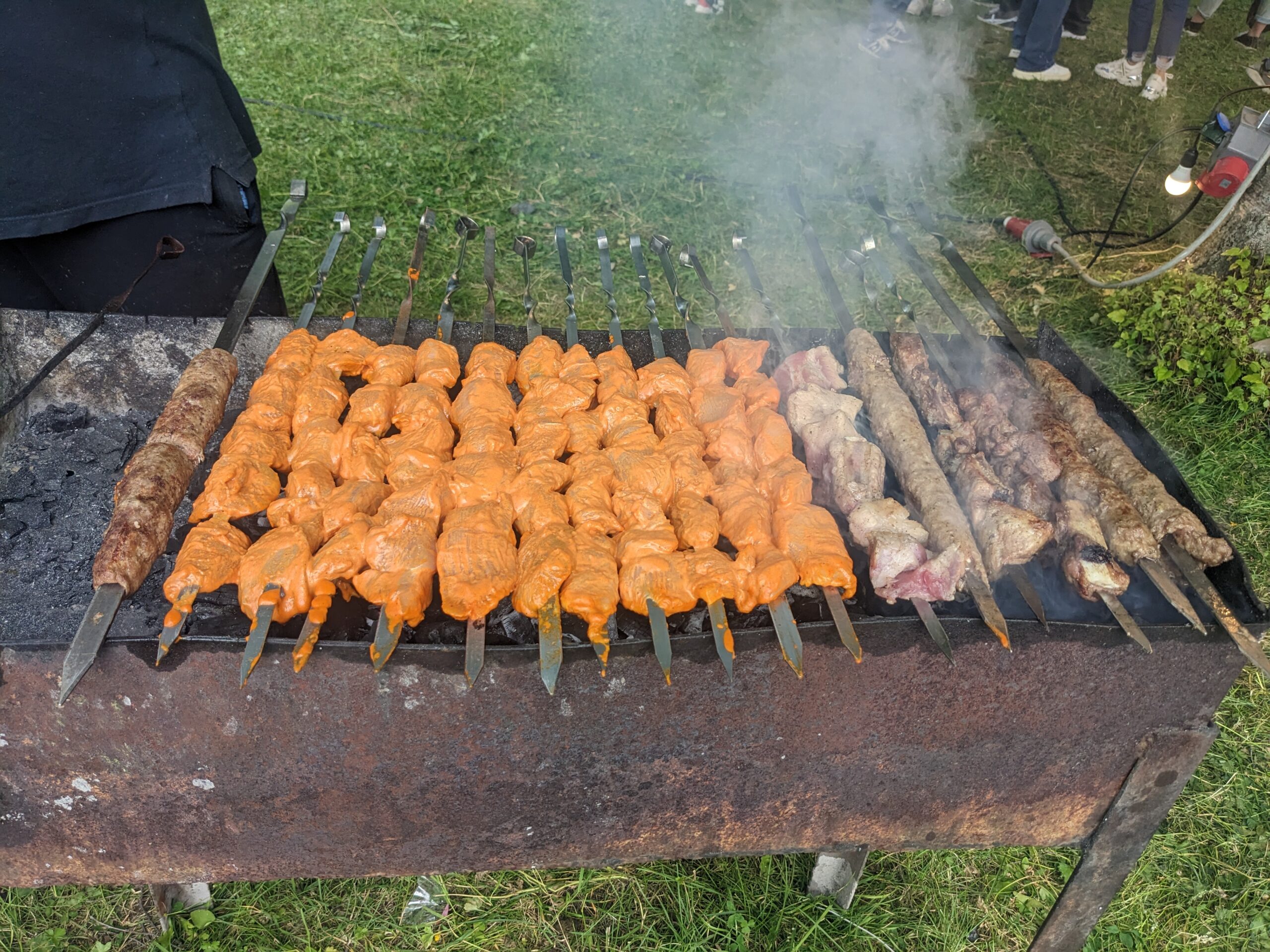
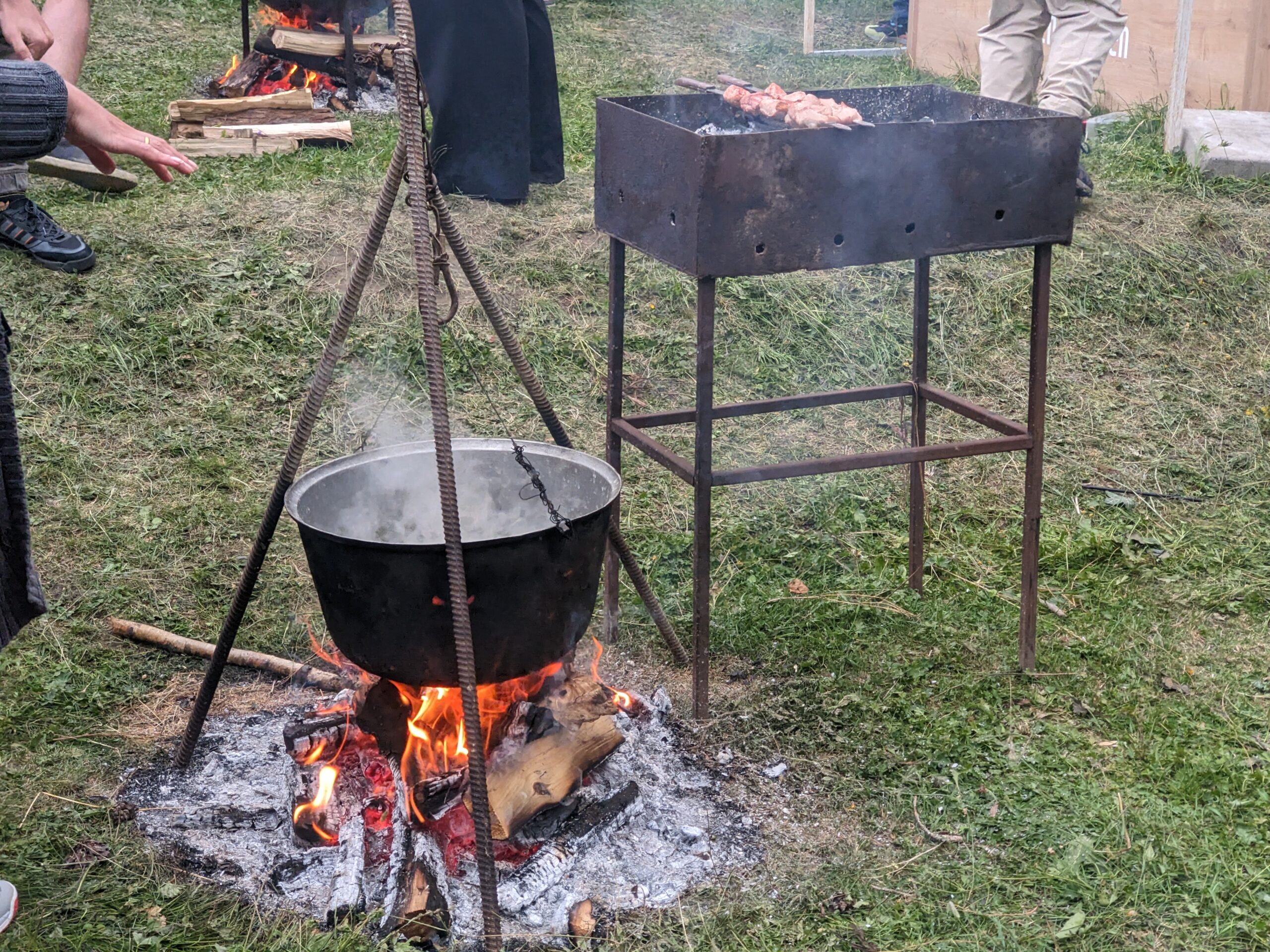
We camped that night up on a hill overlooking the town and the wonderful mountains all around us. At 1900 metres (6,200 feet) the temperature dropped and the clouds moved in – just as we would expect for these surroundings. And when the clouds eventually parted we had absolutely unbelievable views of snow-capped Mt. Kezbegi just opposite us.
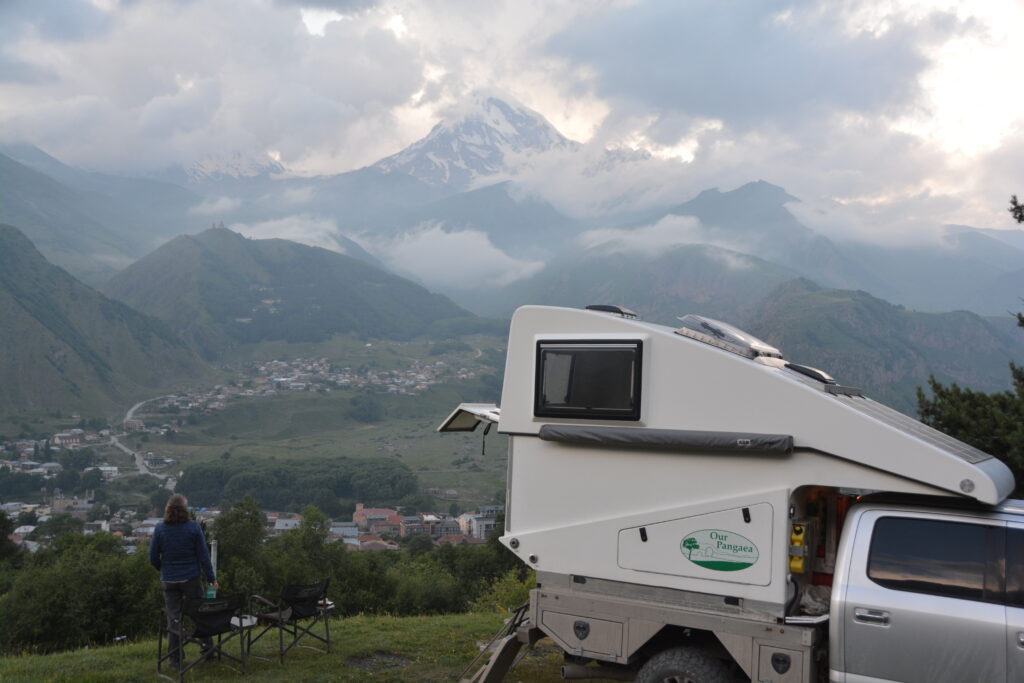
We spent the next day exploring this beautiful area, first by driving up to the Gergeti Trinity Church which sits on a prominent outcrop at the base of Mt. Kezbegi. It was Sunday morning and a local service was in session in this 14th century church, much like they’ve been going on for 700 years.
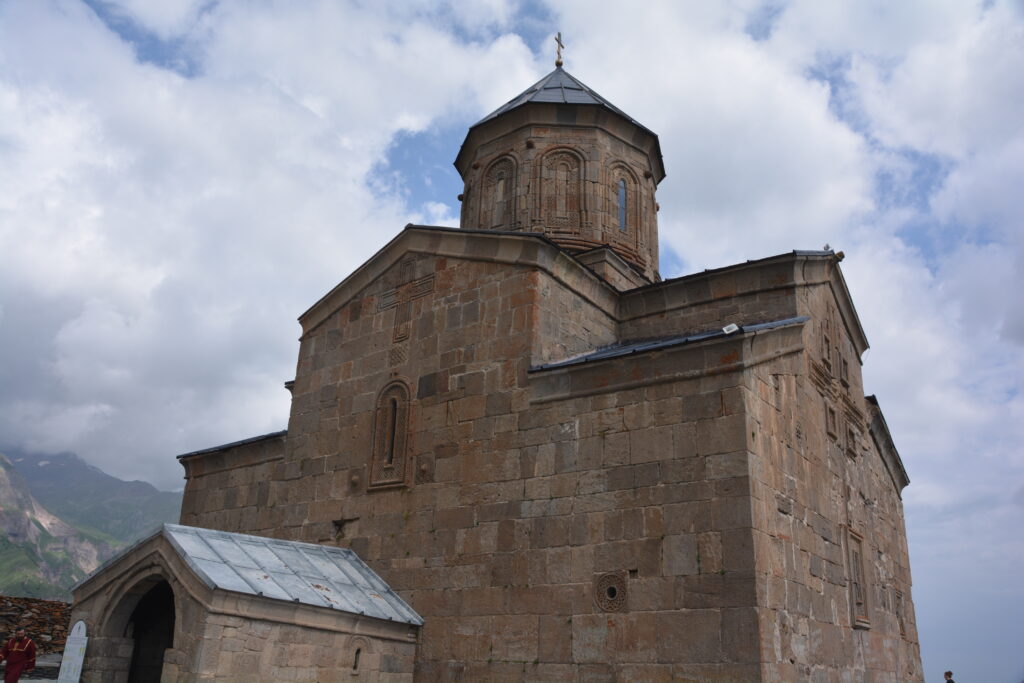
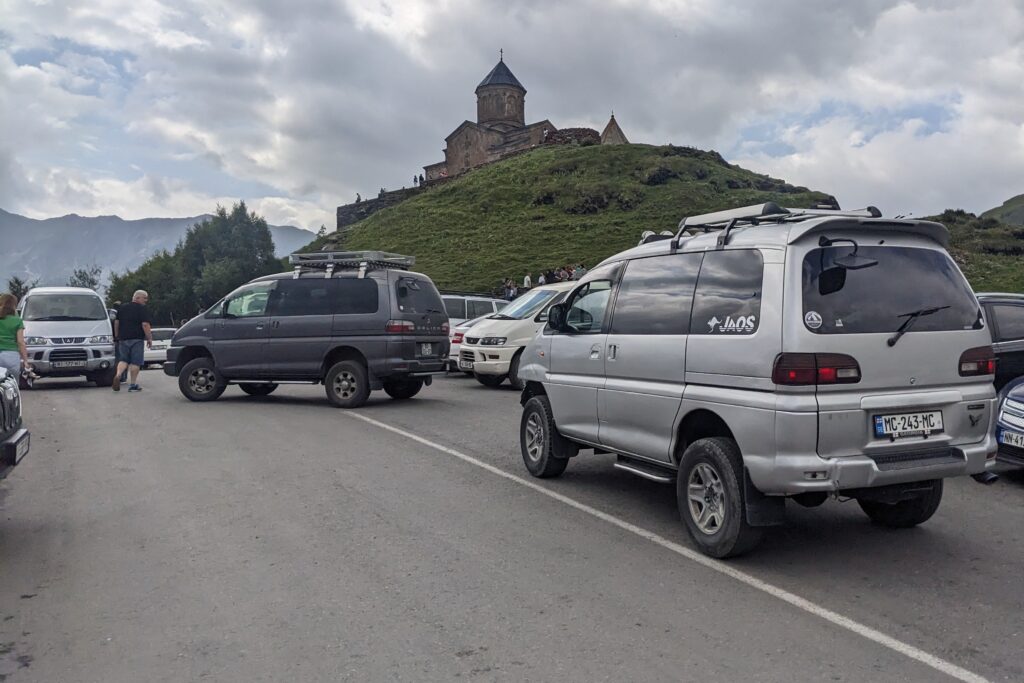
We then drove towards the Russian border, stopping only a couple of kilometres short and walked up to the Small and Big Gveleti Falls, the second of which required quite a hand over foot scramble up the rocky slope which was rewarded with a dazzling long and full waterfall crashing down at our feet. Very cool.
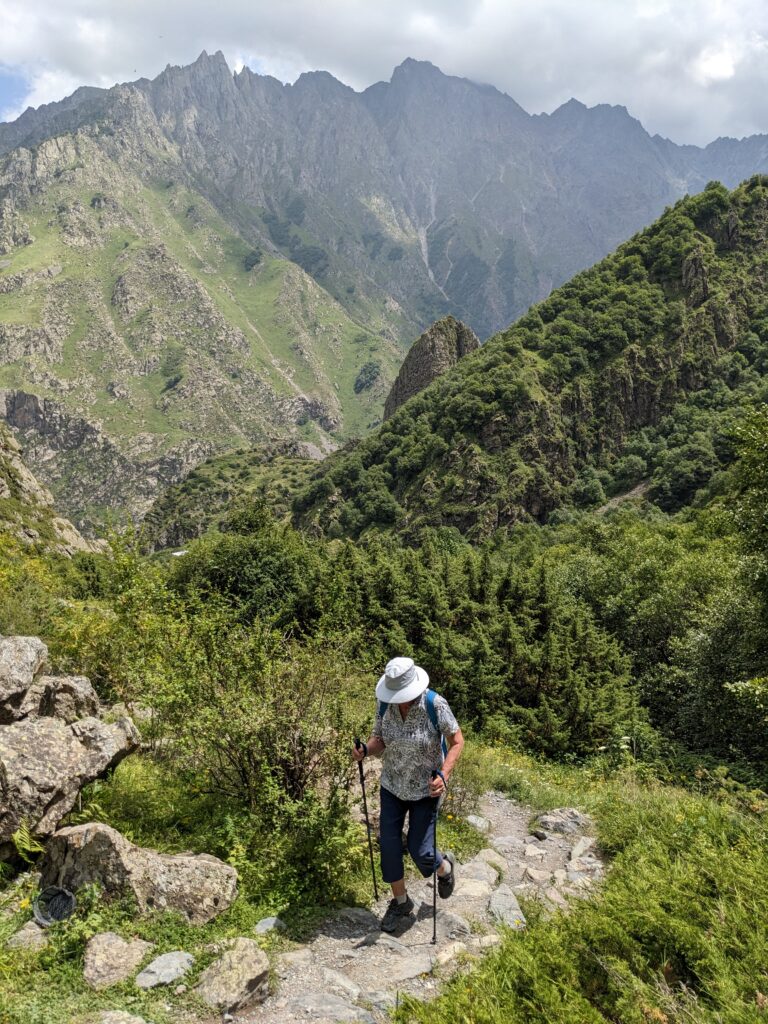
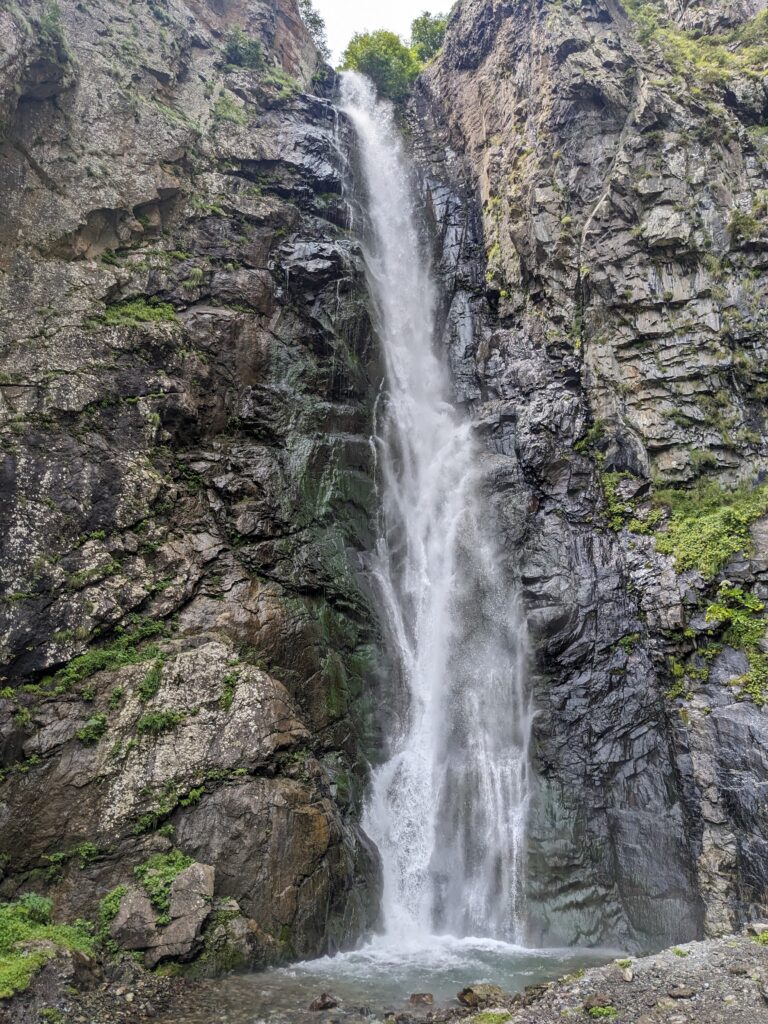
After the walk we were having our lunch next to Tramp when three young Russians came by, first admiring Tramp (of course it always starts with Tramp), then asking us the usual questions about two Australians travelling in an American car in Georgia. As if that’s unusual. We asked what they were doing in Georgia, ignoring the point that half the cars in this area were from Russia, and they said they were in the process of moving to Montenegro because they were opposed to Putin and his war in the Ukraine. Our interpretation was they were avoiding the draft, like hundreds of thousands of other young Russians, and they were prepared to leave their country to do it.
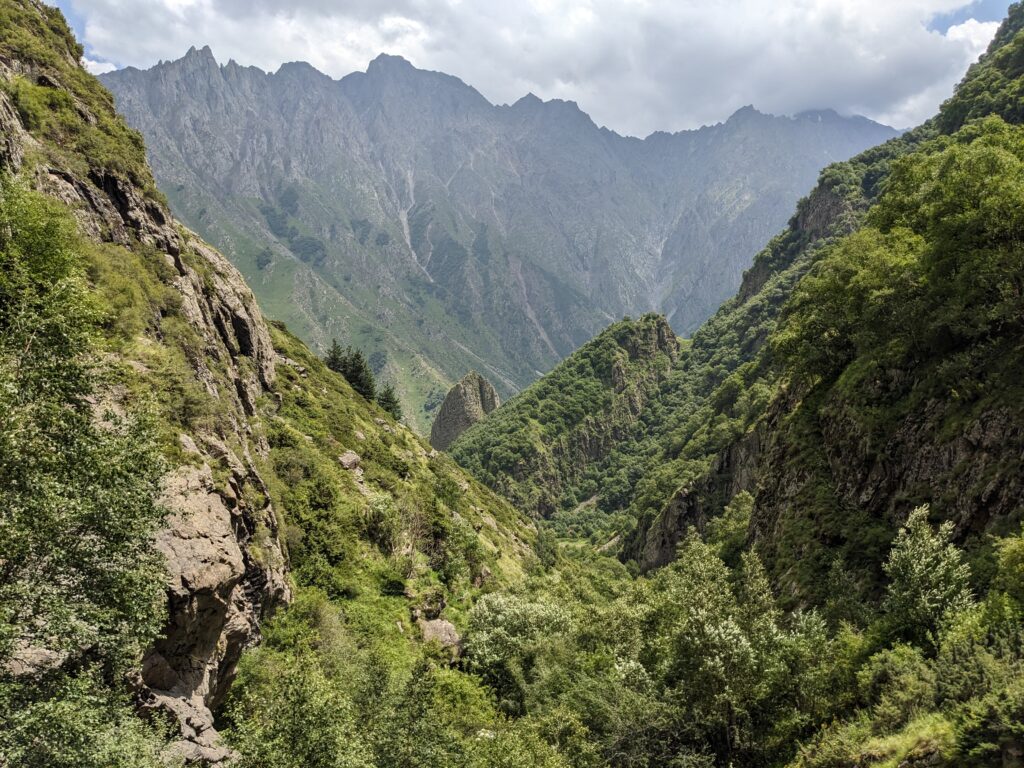
That afternoon we drove up the locally acclaimed Sno Valley, finally an easy Georgian word to pronounce, and parked at the village of Juta (another one!) which marks the end of the road in this valley of near-vertical green velvet walls rising far above us. So taken were we of this setting we drove down to the banks of the glacier-fed Jutiskali River, set up camp for the night and lit a fire. Absolute bliss.
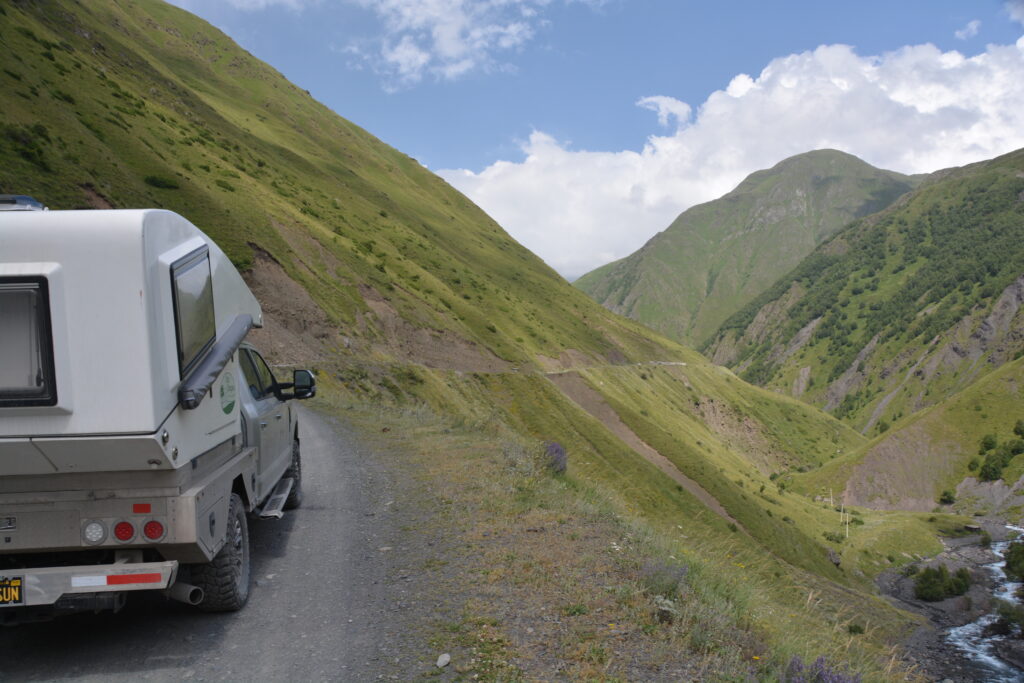
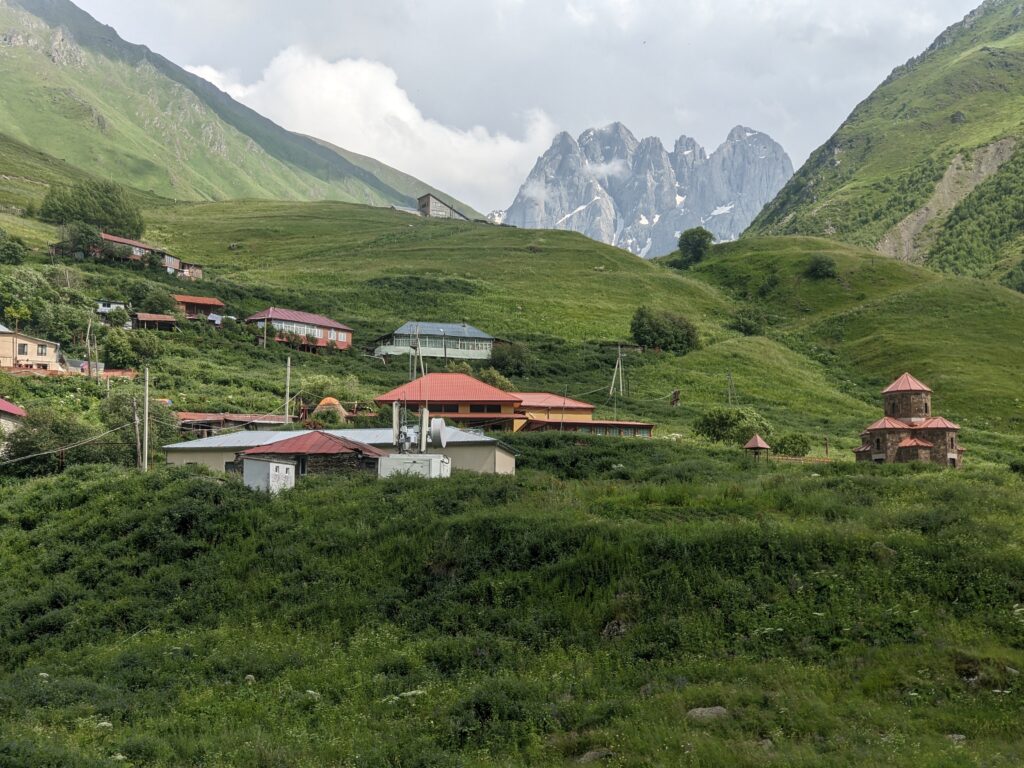
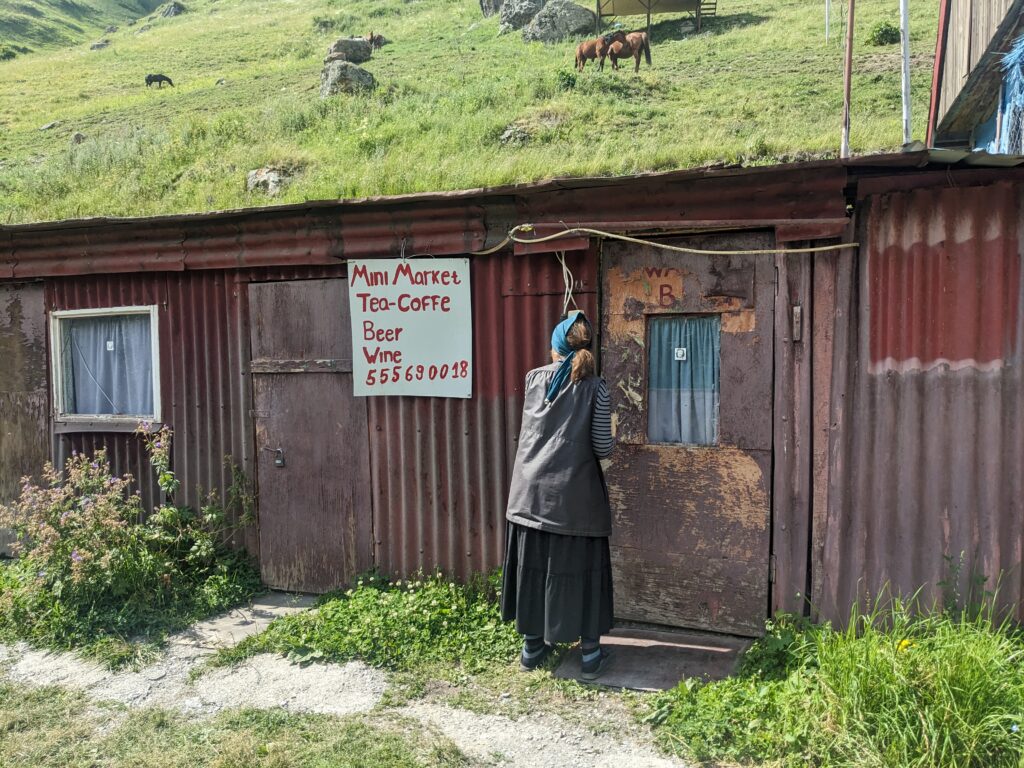
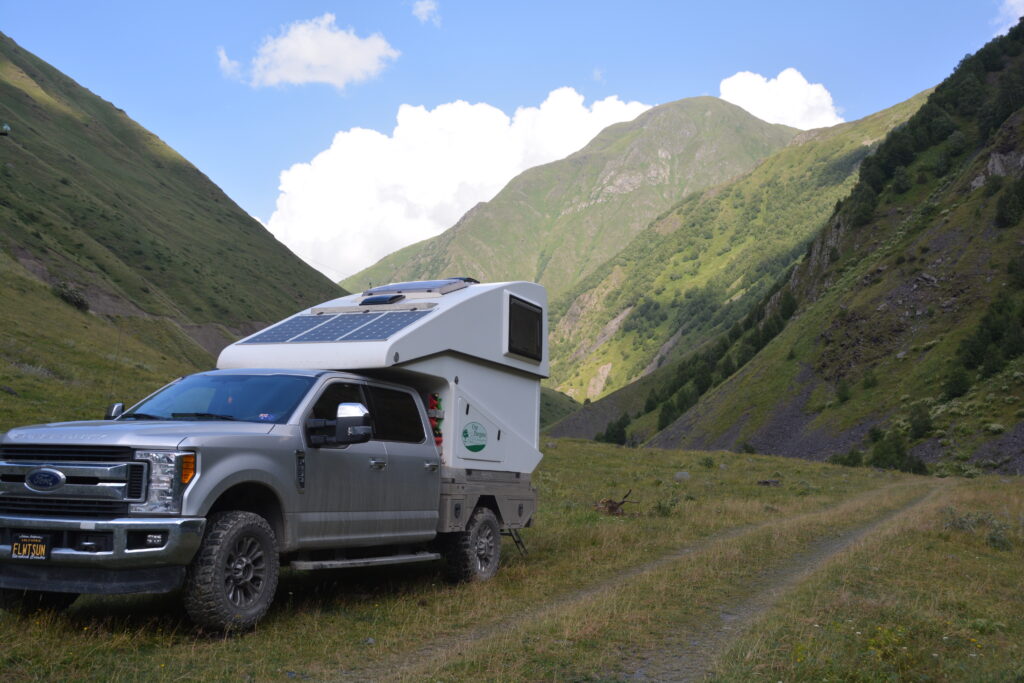
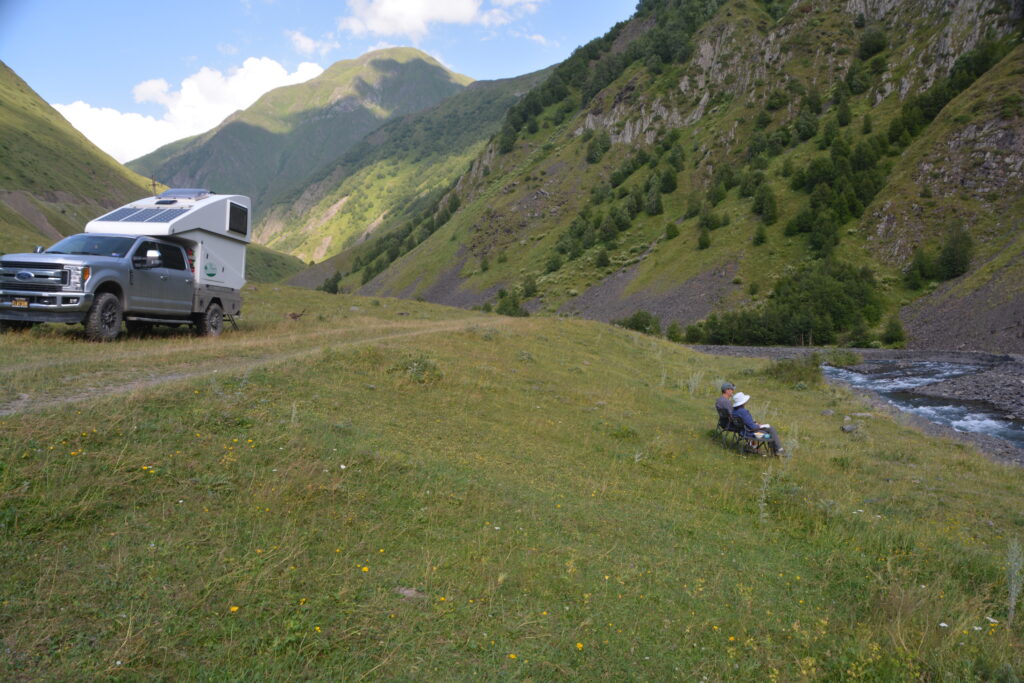
But the weather had turned and the next morning our plans to drive up the Truso Valley to get in touch with more mountains was thwarted by heavy rain, a muddy track and low-hanging clouds. So we headed south on the Georgian Military Highway, fighting the trucks, the poor road, the driving rain and the kamikaze drivers, over the Jvari Pass again and down to the Zhinvali Reservoir where we stopped to check out the 17th century Ananuri Fortress complex with a handsome wall, two churches and commanding views over the reservoir (which admittedly wasn’t there in the 17th century).
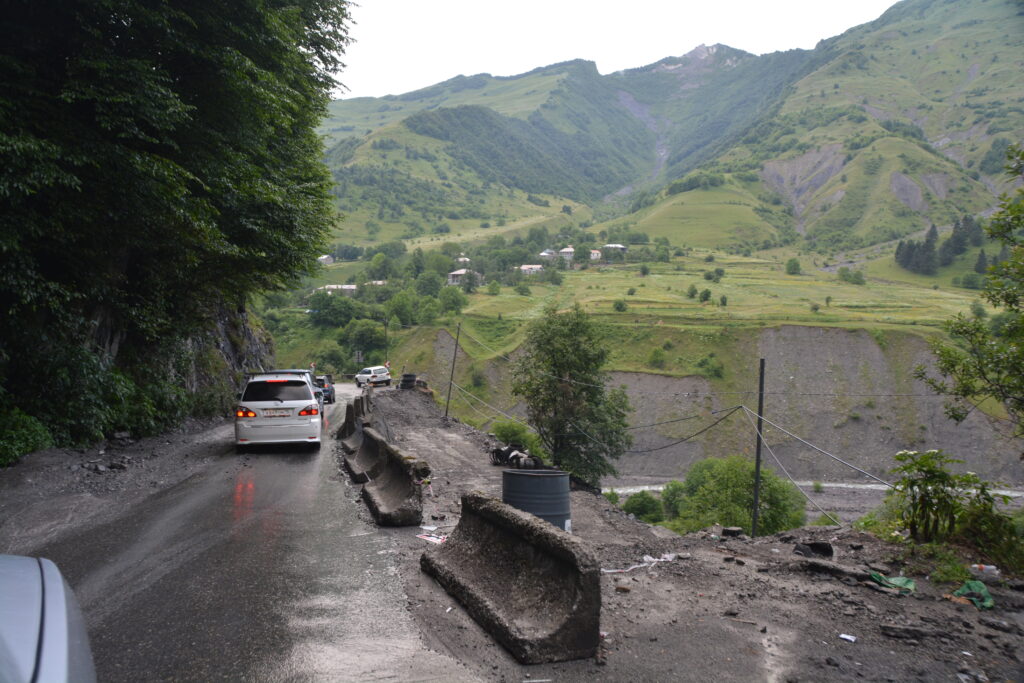
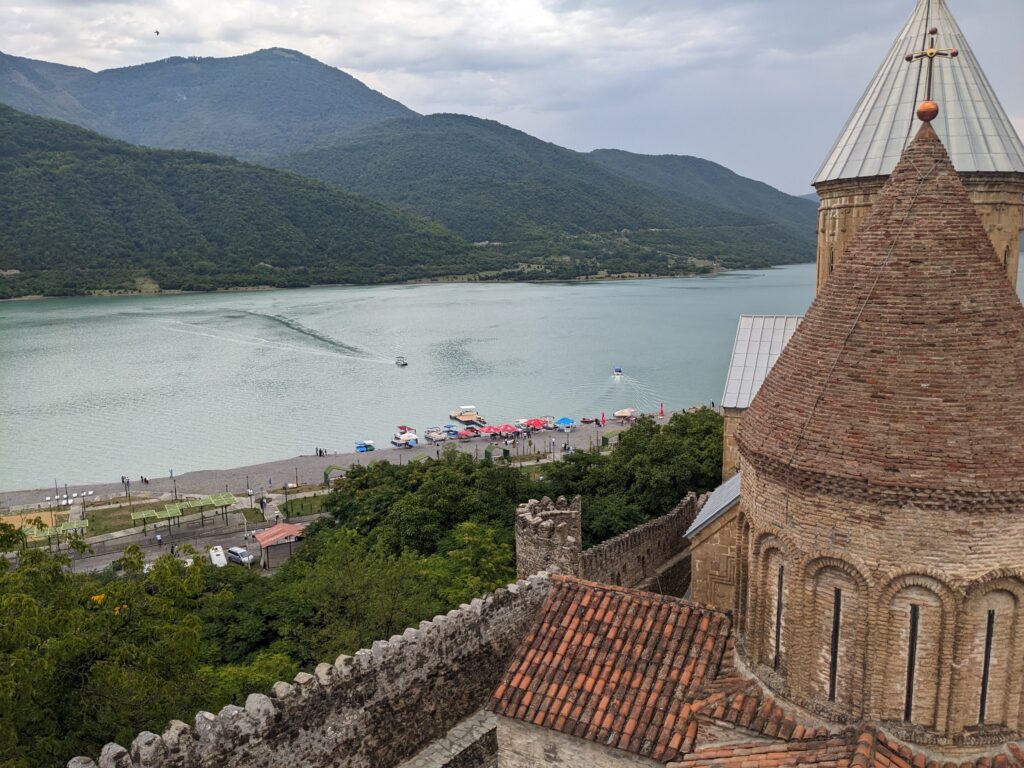
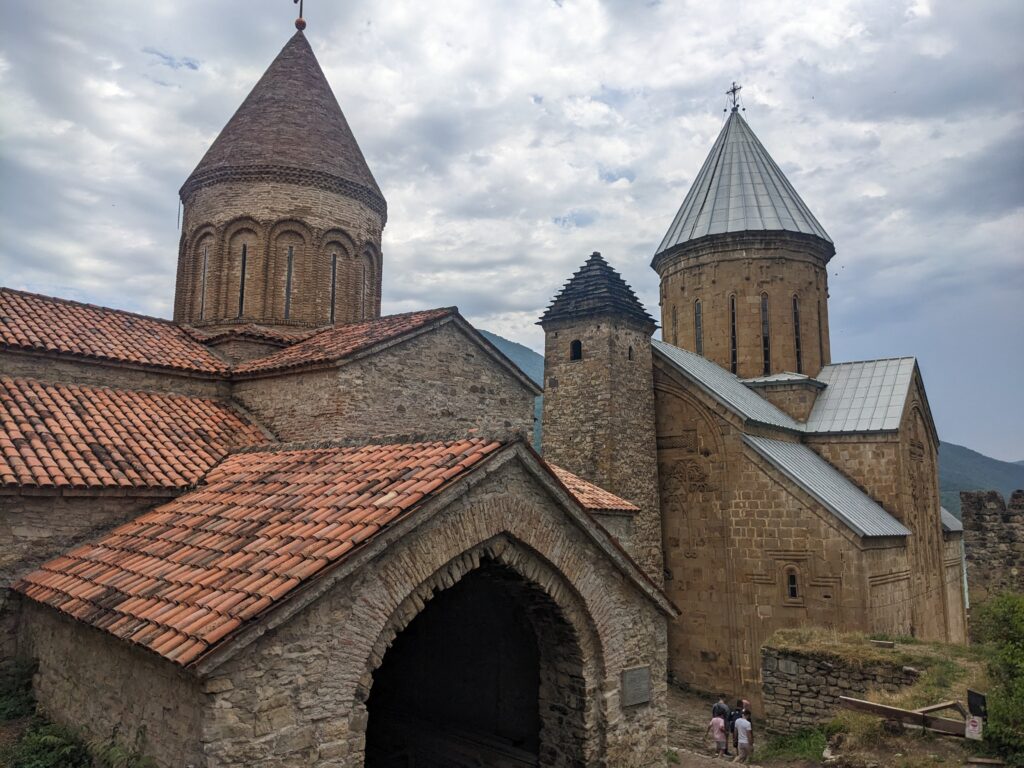
Shortly thereafter we stopped for lunch only to find out by chance that our camper top wasn’t rising due to what appeared to be an electrical problem with the motor. Oh no, this could potentially be very major as it stops us getting inside. When this happened in Chili many years ago the problem was a blown hydraulic motor and I had to get the company in California to ship me a new one.
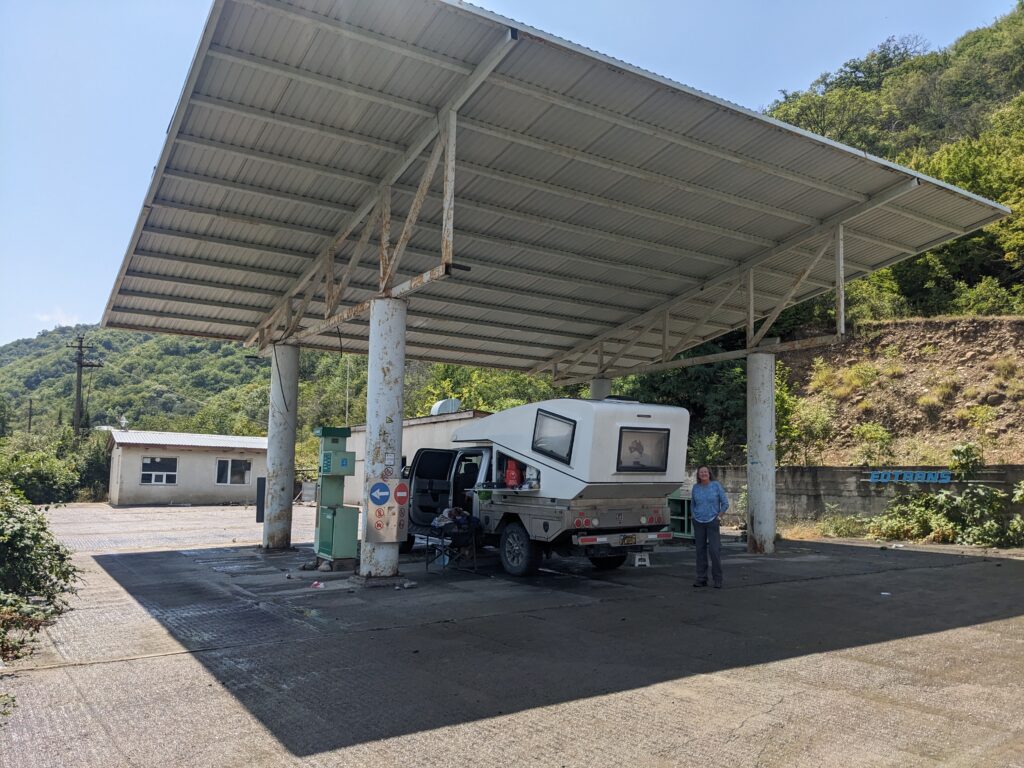
This time I had a spare motor but couldn’t diagnose exactly whether it was an electrical issue or the motor. Either way, our hearts sank, that familiar feeling when things go bad, as we changed plans and headed for the capital of Tbilisi with the hope we could find someone to help us.
And as it happened, we found George, or Giorgi to his mates. We had already gone to five different places, got the run around or brush off every time but eventually Google sent us to this obscure back street with a greasy outdoor garage and George. He spoke great English, very keen to hear of our travels and found the loose electrical connection within minutes. Big hugs for George.
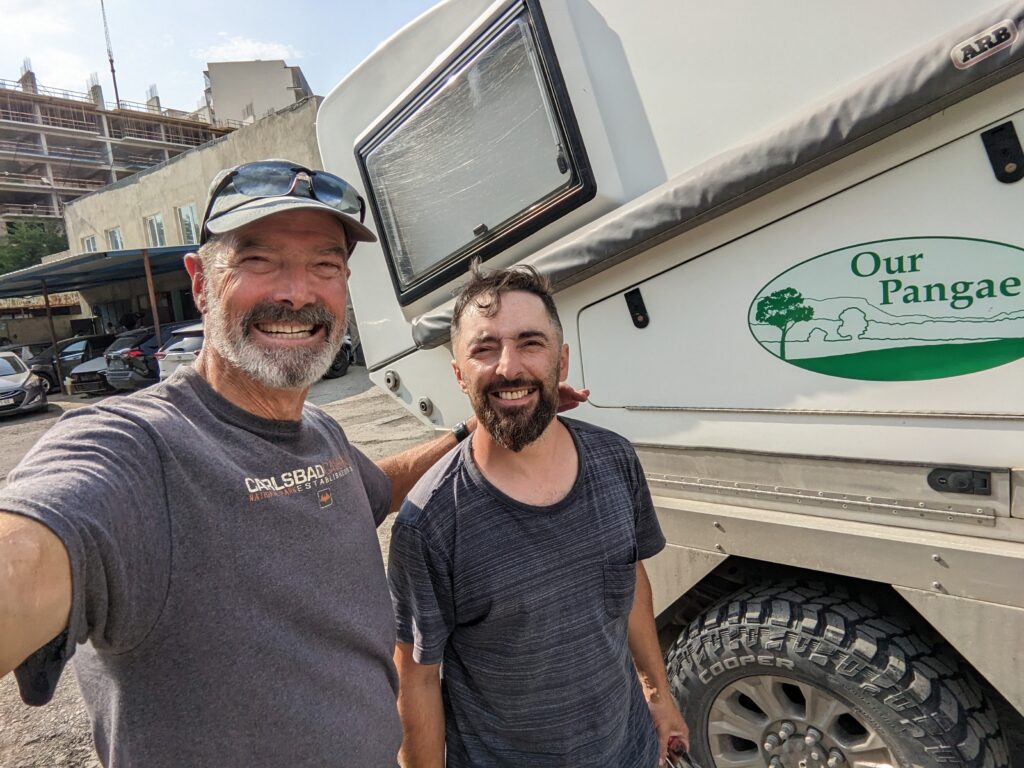
We camped that night on the banks of the very full Kura River under the impressive Jvari Monastery which was perched high on the mountain top above us. We felt the travel angels had been kind to us yet again and we were once more a full bottle, ready to keep exploring the next day. I can’t tell you how great that feels.
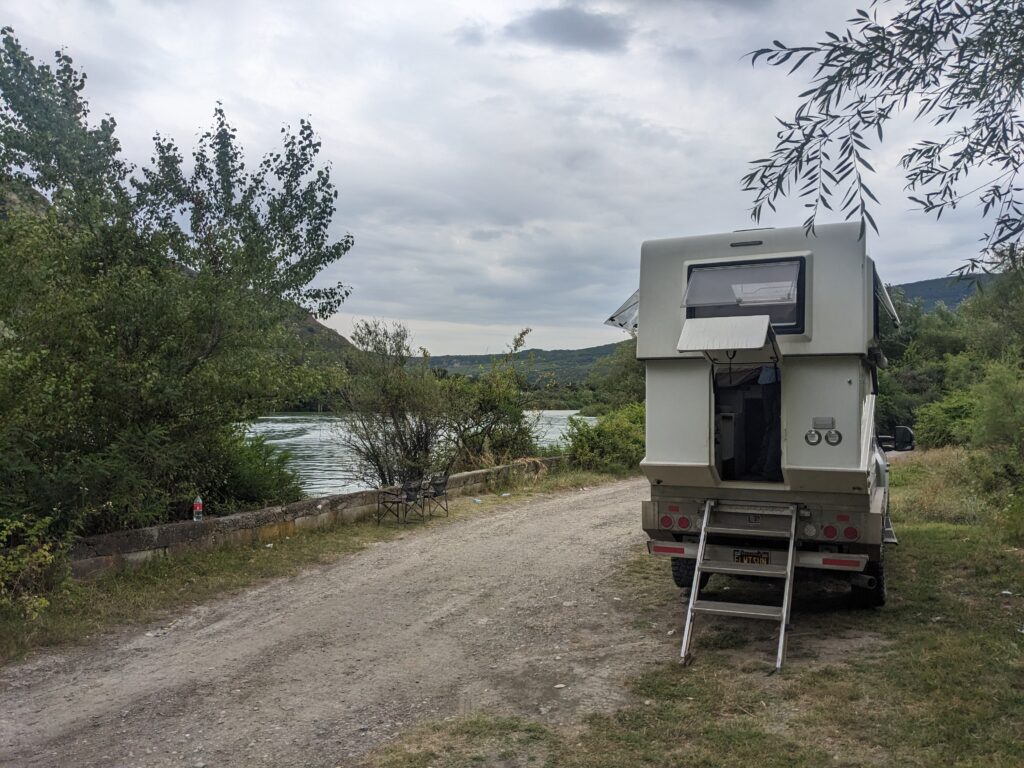
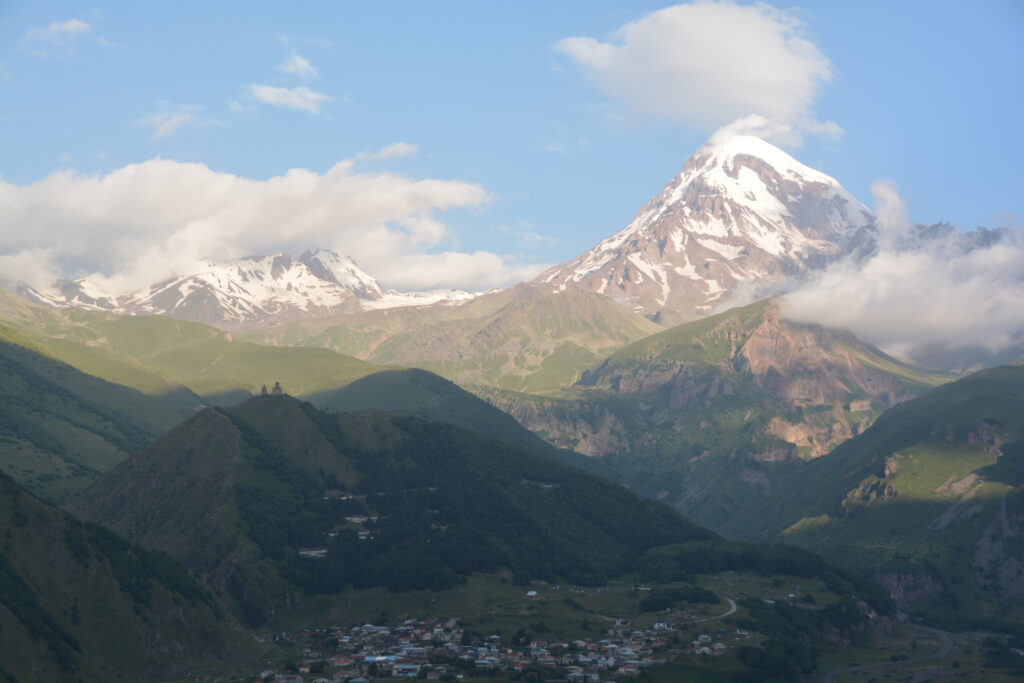
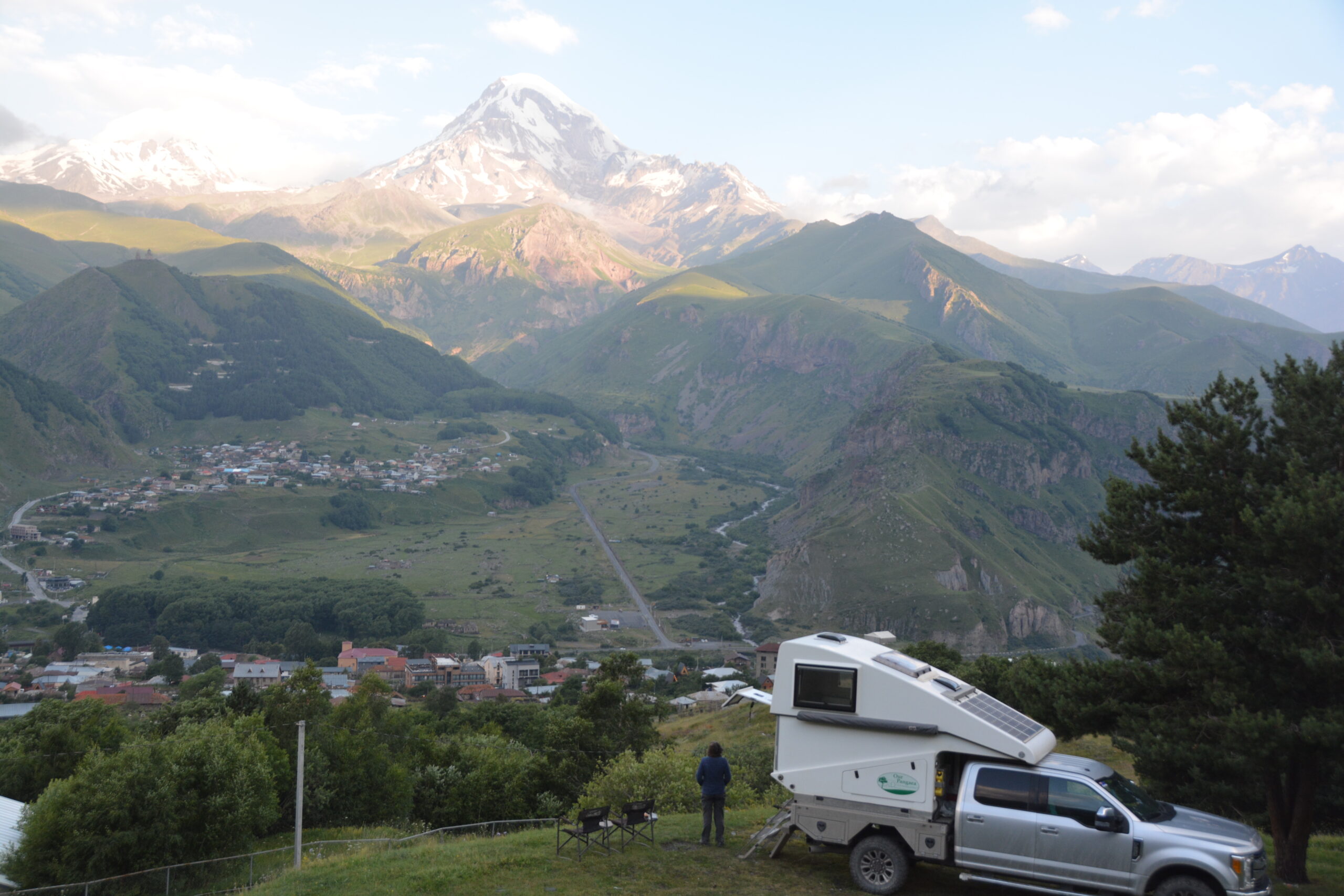
What an amazing place
Glad your car trouble was fixed
It’s incredible how you can find someone to help you
Hi Marg, car trouble is just part of travelling with a car and we’ve probably been luckier than most people but occasionally Tramp just sits down and says no.
Beautiful, but scary to me
Hi Anne, yes, these mountains are beautiful and on this occasion we did have a couple sketchy moments but all good now!